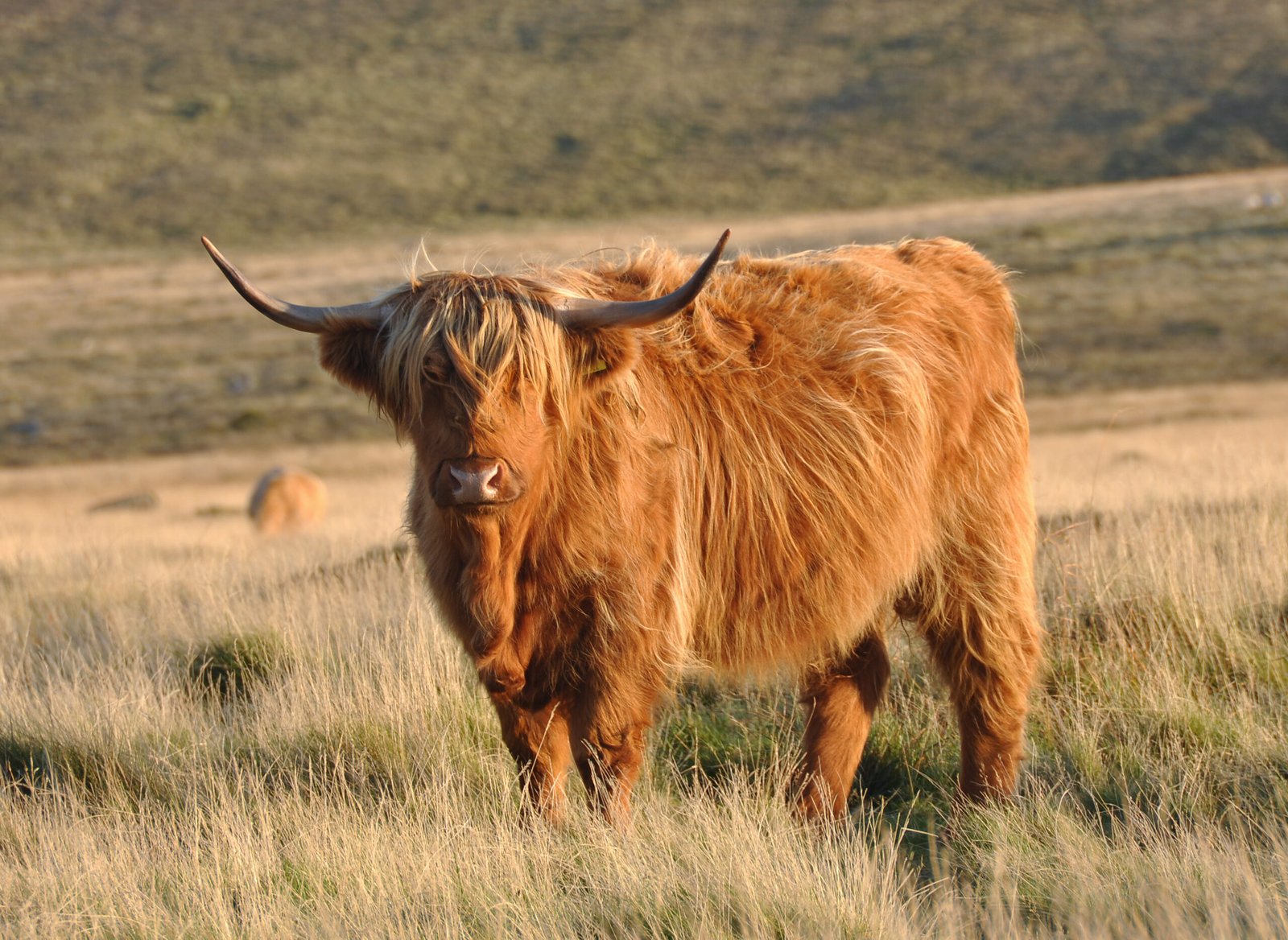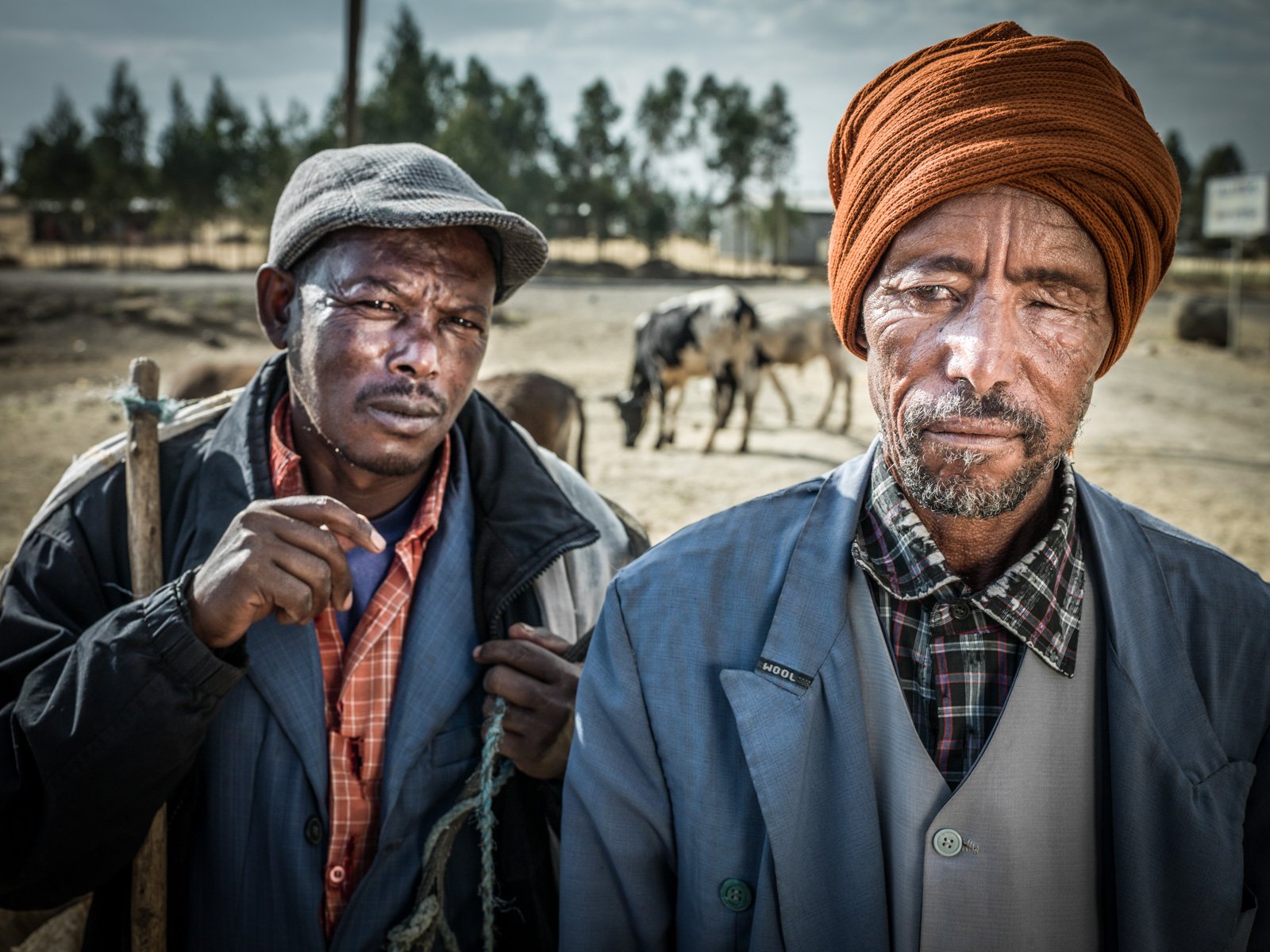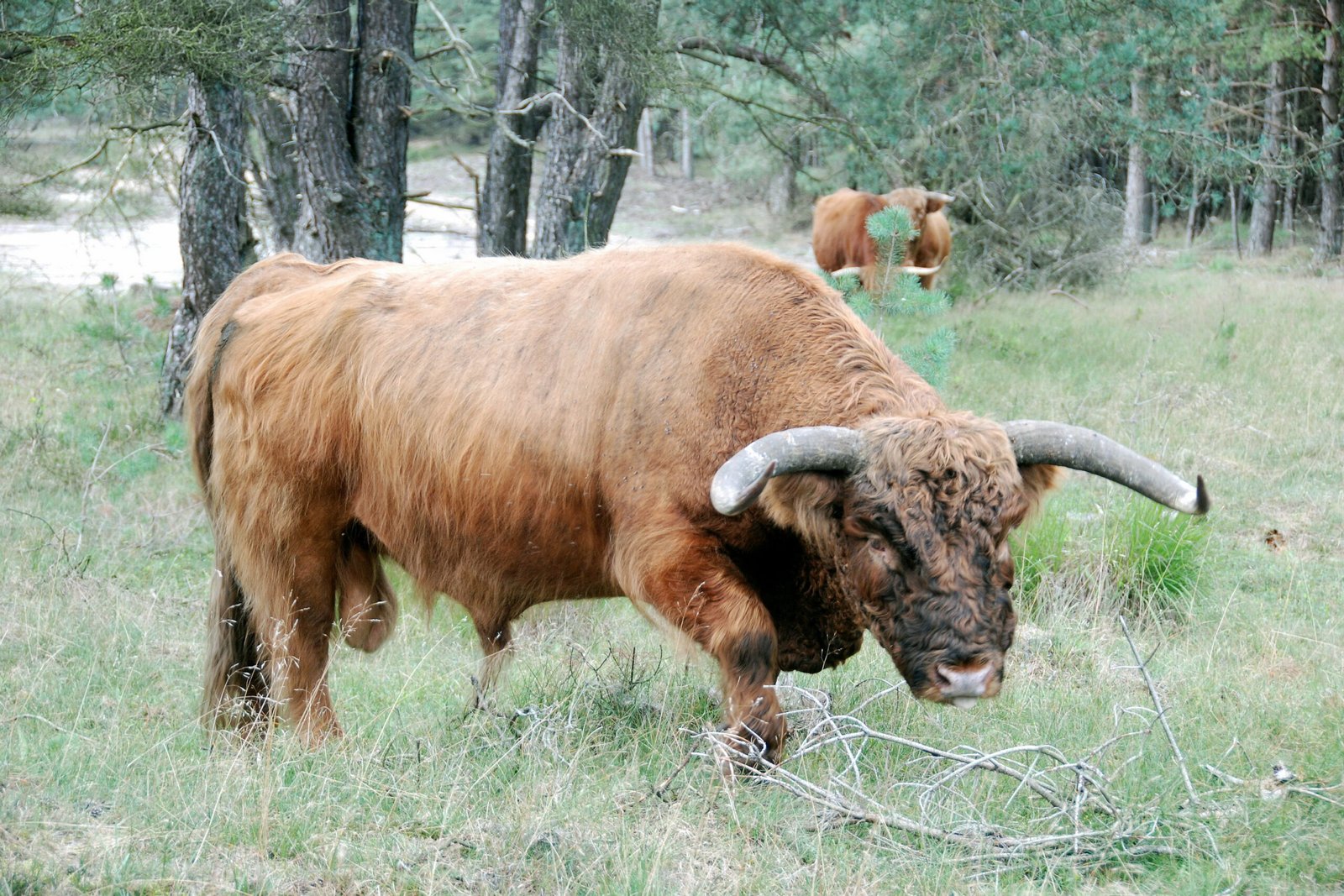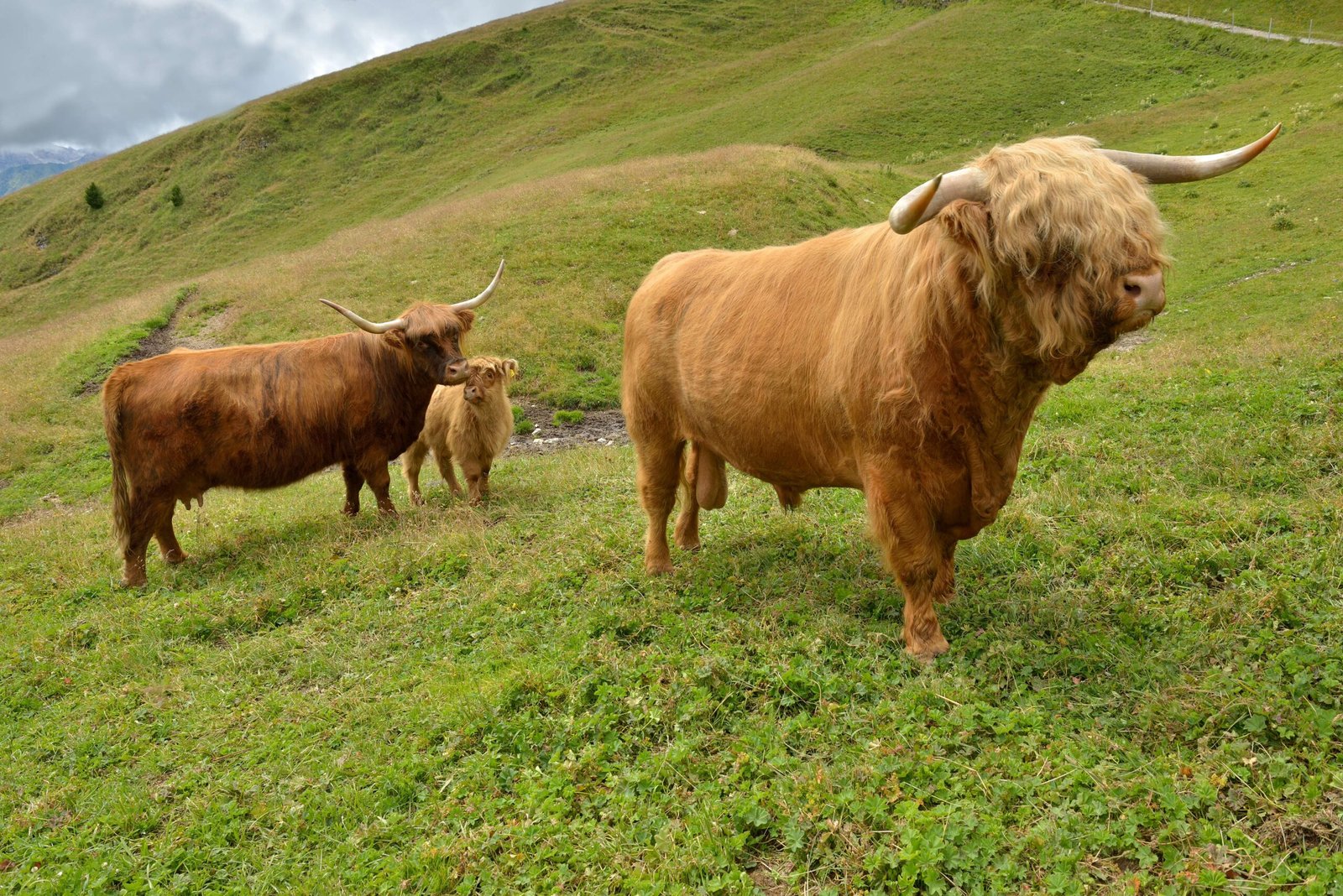Thick fog rolls across the Scottish hills, and suddenly, a set of wide, curved horns appears—followed by a shaggy, ginger mane and an unblinking stare that radiates ancient wisdom and a touch of mischief. Meet the Highland cow, or “Heilan coo” in Scots: a beast so iconic it almost feels mythical. Famous for their long, tousled hair and sturdy bodies, these cows are more than just photogenic farm animals. They’re living relics of a wild, unforgiving landscape, embodying resilience, power, and a quirky personality that has captured the hearts of locals and travelers alike. But what makes these “hairy tanks” so special, and why have they survived for centuries in some of the harshest conditions Europe can muster?
The Highland Cow’s Distinctive Look
When people first see a Highland cow, they’re often struck by its wild, untamed appearance. Their long, flowing coats come in shades ranging from deep red to creamy white, even black and dun, acting like a natural blanket against wind and rain. Those signature horns, sweeping outwards like tree branches, give them a prehistoric vibe—almost as if they belong in a fairytale. The thick fringe, or “dossan,” shields their eyes from biting winds and relentless insects. Every feature of their body tells a story of adaptation—each strand of hair, each curve in their horn, designed for survival in the rugged Scottish Highlands. It’s as if nature itself sculpted these cows to be both beautiful and battle-ready.
Ancient Origins: Survivors of the Highlands

Highland cows are not just a recent breed—they trace their ancestry back hundreds, even thousands, of years. Some historians believe they’ve grazed Scottish hills since at least the 6th century, possibly even earlier. Their DNA reveals a blend of Celtic and Norse cattle, a testament to Scotland’s turbulent history and migrations. These animals have weathered centuries of harsh winters, clan wars, and changing landscapes, steadily forging a reputation for resilience. They’re living links to a time when survival depended on toughness, adaptability, and sheer willpower. Every Highland cow is, in a way, a four-legged history book, carrying the legacy of Scotland’s wild past.
Built for Battle: Nature’s Woolly Warriors

Highland cows are often called “hairy tanks” for a reason. Their muscular bodies are compact and strong, built to withstand both predators and punishing weather. While they might look slow and gentle, don’t be fooled—these cows can move with surprising speed if threatened. Their horns are not just for show; they’re powerful tools, used to defend against threats and compete for resources. Even their hooves are extra tough, gripping rocky terrain where softer breeds would falter. In the wild, survival is a game of strength and strategy, and Highland cows are master players, blending brute force with clever instincts.
The Science of the Shaggy Coat

What’s the secret behind the Highland cow’s legendary coat? Scientists have found that their double-layered hair acts as a natural climate shield. The long, oily outer hairs repel rain and snow, while the soft undercoat traps warmth close to the skin. This remarkable adaptation means Highland cows can graze outdoors year-round, even when snow covers the grass. Unlike other cattle, they don’t need to build up thick layers of fat, allowing them to stay lean and active. The science is simple yet elegant: insulation, waterproofing, and thermoregulation, all in one glorious mane.
Attitude That Matches the Landscape

If you’ve ever tried to herd a Highland cow, you’ll know they’re not just tough—they’re fiercely independent. Farmers often describe them as clever, stubborn, and surprisingly bold. They form tight family groups, fiercely protecting their calves from danger. When faced with a challenge, they don’t back down easily, whether it’s a nosy tourist or a lurking predator. This strong-willed nature is essential for surviving in the unpredictable Highlands, where only the most adaptable—and sometimes the most stubborn—make it through. Their attitude is as much a part of their legend as their looks.
Highland Cows in Scottish Culture
These cows are woven deeply into the fabric of Scottish life. They appear on everything from tourist postcards to whisky labels, and their gentle eyes and woolly fringes have inspired countless songs, stories, and artworks. Some Scottish clans even used Highland cattle as a symbol of wealth and status. In rural villages, they’re a source of pride and affection—a reminder of Scotland’s untamed spirit. For many, the sight of a Highland cow grazing on a misty hillside is the very definition of “home.”
Gentle Giants: Temperament and Intelligence

Despite their fierce looks, Highland cows are often described as gentle giants. Many farmers say they’re among the most docile breeds, with a calm, almost curious approach to humans. This temperament makes them easier to handle than their size and horns might suggest. They’re quick learners too, able to recognize individual voices and even respond to their names. Some families in Scotland have kept Highland cows as pets, and their affectionate nature often surprises those who expect them to be wild and unpredictable.
The Role in Modern Farming

Today, Highland cows are more than just a picturesque part of the landscape—they’re a vital part of sustainable farming. Their ability to thrive on rough grazing means they can be raised in areas where other cattle would struggle. This reduces the need for artificial feed and supports biodiversity, as they help maintain healthy grasslands by grazing selectively. Their beef is renowned for its quality: lean, tender, and packed with flavor. For farmers looking to balance tradition with modern sustainability, Highland cows are an unbeatable choice.
Climate Resilience: Adapted for the Future
As climate patterns shift and extreme weather becomes more common, Highland cows are proving to be more valuable than ever. Their hardiness allows them to cope with both cold snaps and unexpected heatwaves. Researchers have noted that their genetic diversity makes them less prone to disease, reducing the need for medical interventions. In a world where livestock faces increasing challenges, these cows offer a model for resilience—living proof that nature’s designs still have lessons for us all.
Cherished by Locals and Loved Worldwide
It’s not just Scots who adore Highland cows—their fame has spread far beyond the Highlands. Tourists flock to see them, snapping selfies with these “hairy tanks” and sharing stories of their gentle encounters. Artists and photographers are endlessly inspired by their striking looks and soulful eyes. Social media has made them global stars, with fan pages and hashtags celebrating their quirks. For many, Highland cows represent a connection to nature’s wild beauty—a reminder of simpler, sturdier times.
Conservation and the Road Ahead

While Highland cows are not currently endangered, preserving their unique traits is more important than ever. Breeders work carefully to maintain genetic diversity, ensuring that the breed’s hardiness and adaptability remain intact. Conservation programs in Scotland and abroad aim to protect their habitats and promote traditional farming practices. The future of Highland cows depends on a blend of respect for history and innovation for tomorrow—a balance that mirrors the cows themselves, standing strong between the past and the future.
A Lasting Scottish Legacy

Highland cows are more than just livestock—they’re living symbols of Scotland’s rugged heart and wild soul. Their shaggy coats, powerful bodies, and unbreakable spirit have helped them thrive where many would falter. Whether you admire them for their looks, their attitude, or their storied history, one thing is clear: Highland cows are true survivors, carrying the legacy of the Highlands on their sturdy backs, one determined step at a time.




